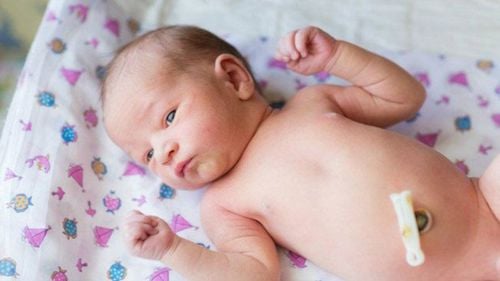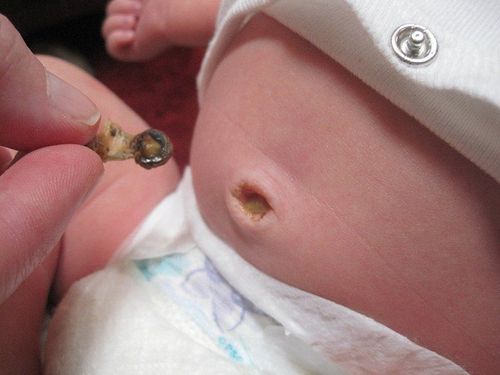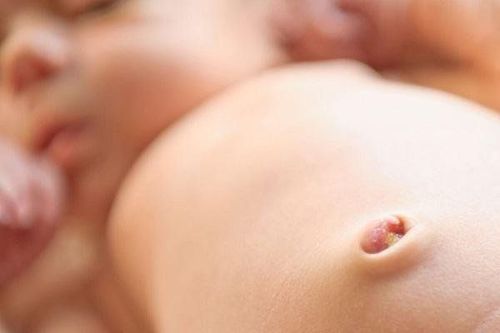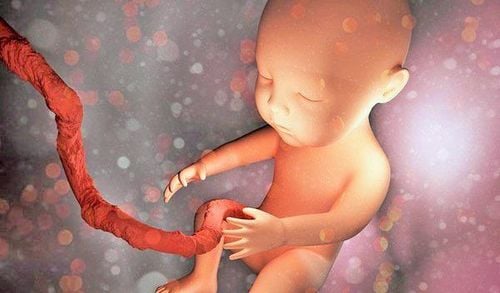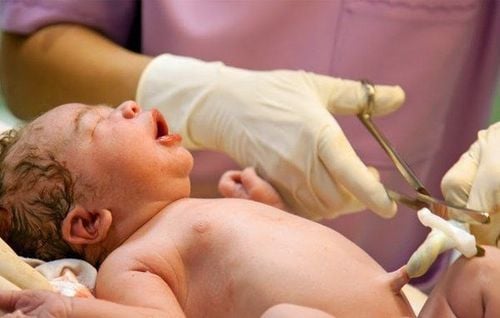This is an automatically translated article.
The article is expertly consulted by Master, Doctor Le Phuc Lien - Urologist - Department of General Surgery - Vinmec Nha Trang International General Hospital.Surgical treatment of urachal cysts in infancy is usually simple and highly effective. If left untreated, some umbilical cord lesions can develop into malignancy later in life.
1. Overview of pathology existing urachal canal
The urachal tube is 3-10 cm long, 8-10 mm in diameter, a tube connecting the umbilicus and the bladder during the fetal period. After birth, the urachal canal closes on its own and fibrosis becomes the umbilical-bladder ligament.
Ống niệu rốn sẽ đóng lại và xơ hóa sau khi sinh
Open urachal tube (accounts for 50% of cases) case): The disease occurs when the entire urachal canal is present. The patient will have a characteristic symptom of seeing a discharge from the navel. When using hands to gently press, cry or cough, more fluid flows from the navel. Examination of the discharge from the navel shows that the fluid is urine in nature. Umbilical cyst (15%). Umbilical cysts (30%). When the physician palpates the abdomen, a tender cystic tumor may be seen, located below the navel. Urinary tract diverticulum (also called bladder diverticulum, accounts for 5% of urachal tract pathologies): If the umbilical cord is blocked at the umbilicus but is open on the optic side, it will form a diverticulum of the urachal canal. Most patients are asymptomatic, a small number of patients may have an infection due to urinary retention. With the development of imaging techniques, urolithiasis is now relatively easy to diagnose. Ultrasound will help guide the diagnosis, and techniques such as laparoscopy, computed tomography, and retrograde cystography may be used further to confirm the diagnosis. These techniques not only help detect urachal cystic disease, but also can detect other associated urinary anomalies, if present.
Urinary cysts and diseases caused by the existence of umbilical canals cannot be cured by themselves, but need to be treated with surgery. These diseases, if detected and treated at a young age, are often simple and effective. If missed, the disease has the potential to progress to malignancy in adulthood.
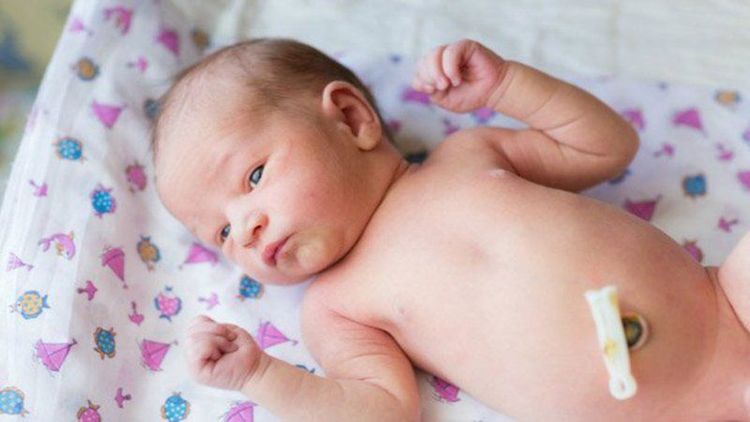
Các bệnh lý nang niệu rốn cần điều trị khi trẻ còn nhỏ
2. Fistula surgery, umbilical cord cyst, urachal cyst (urinary cyst surgery)
Surgery is indicated in patients with existing urachal tract pathologies, with or without complications. Do not perform surgery in patients who are debilitated, elderly, or have health reasons contraindicating surgery.The surgery takes about 30 minutes, is performed by a team of digestive surgeons and a team of experienced anesthesiologists and technicians.
The patient is instructed to lie on the operating table, lying on his back with legs apart. The technician placed a bladder catheter, the anesthesiologist team performed endotracheal anesthesia.
Urethral cyst surgery is performed according to the following steps:
The doctor makes an incision along the middle white line above the navel 3 cm. Dissect the skin and subcutaneous tissue, determine the anterior wall of the bladder by the midline of the umbilicus, and locate the urachal canal at the base of the bladder. Resection of umbilical cord lesions. Stitch the umbilical cord, suture the bottom of the bladder. Stop bleeding, close the incision with sutures in the skin. Wound dressing. After surgery, the patient will be given pain relievers and antibiotics to prevent infection. Wash the wound and change the dressing when it is soaked with fluid. Patients usually stay in the hospital for 1-3 days.
Common complications after surgery for urachal cysts are:
Bleeding: The patient should be closely monitored if abdominal bleeding is detected, if necessary, immediate surgery is required. Intestinal obstruction: if after surgery, the patient has intestinal obstruction, the doctor will examine carefully to determine the functional intestinal dilatation or mechanical intestinal obstruction. If intestinal obstruction is caused by mechanical causes, surgery must be repeated to treat the cause. The patient still leaks urine in the navel: it should be checked and treated again. Abscess or peritonitis due to fistula, anastomosis: depending on the severity of the complication, the doctor will treat it medically or surgically. Resident doctor Le Phuc Lien has more than 12 years of experience in the field of urology and specialized urology, successfully performing many high-tech techniques such as urology endoscopy, urology, urodynamics, neurogenic bladder. terrible. Currently, he is a Urologist at the Department of General Surgery, Vinmec Nha Trang International General Hospital.
To register for examination and treatment at Vinmec International General Hospital, you can contact Vinmec Health System nationwide, or register online HERE
Recommended video:
Instructions for hygiene umbilical cord birth for newborns
SEE MORE
Slow umbilical cord cutting is good or bad for the baby? Fetal failure due to knotted umbilical cord - What should mothers do to save the fetus? What is the slow umbilical cord clamp for?




